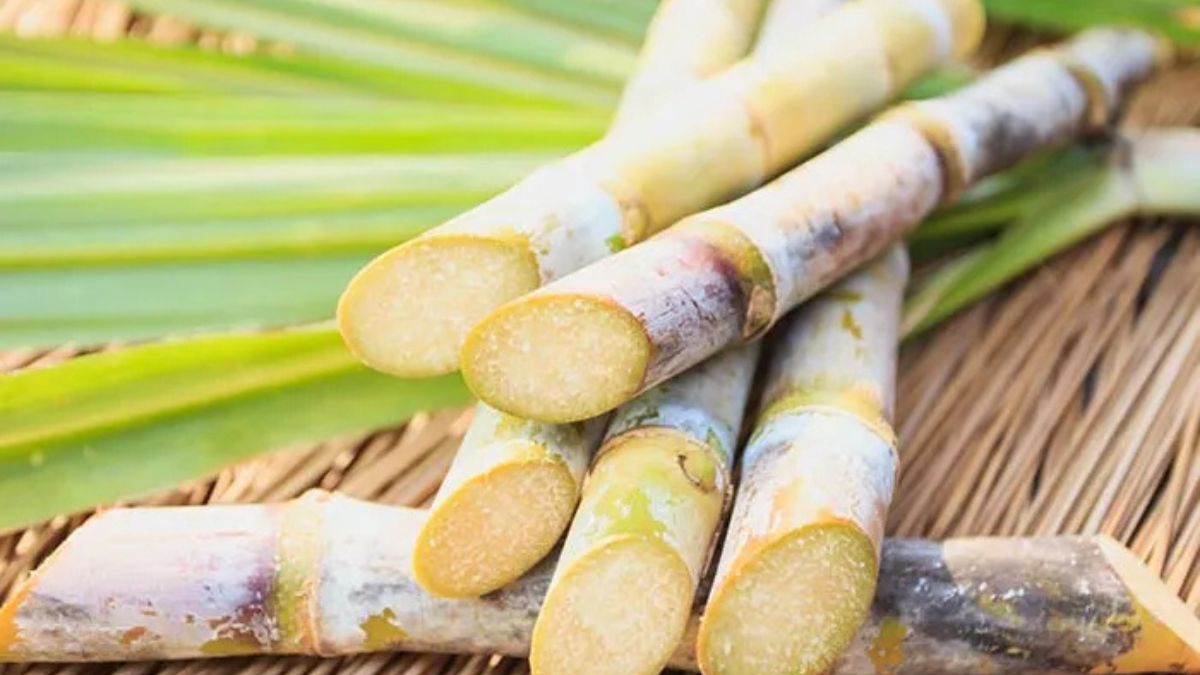Sugarcane is one of Pakistan’s most important commercial crops, contributing significantly to the economy through the sugar industry. As Pakistan continues to modernize its agricultural practices, sugarcane farming is evolving in response to climate, water, and technological challenges. This article offers a complete overview of sugarcane cultivation in Pakistan, including climate conditions, regional practices, production trends, and modern innovations.
Key Growing Regions and Climate
Sugarcane requires a warm and humid environment, with consistent sunlight and well-irrigated soil. Pakistan’s diverse agro-climatic zones offer varying levels of suitability.
Read More: Saffron Cultivation to Begin on Experimental Basis in Swat
| Region | Climate Features | Notes |
|---|---|---|
| Punjab | Humid, high irrigation access | Highest production and yield zone |
| Sindh | Hot, semi-arid, long growing season | Climate stress increasing, needs drip systems |
| Khyber Pakhtunkhwa | Temperate to warm, limited acreage | Moderate production potential |
| Balochistan | Arid, limited irrigation | Marginal role in national output |
Area, Yield and Production Trends
| Parameter | 2022–23 | 2023–24 | Change |
|---|---|---|---|
| Area Under Cultivation | 1.3 million ha | 1.2 million ha | -10.5% |
| Total Production | 88.0 million tons | 87.6 million tons | -0.4% |
| Yield per Hectare | 67.7 tons | 68.0 tons | +0.3% |
Pakistan remains one of the world’s top 5 producers of sugarcane, although yields remain below global benchmarks due to traditional farming methods and climate impact.
Water Usage and Irrigation Challenges
Sugarcane is highly water-intensive, using approximately 25,000 cubic meters per hectare in Punjab—twice the global average. Conventional flood irrigation causes salinity, soil erosion, and waterlogging, prompting the shift to water-efficient systems.
| Irrigation Type | Water Use Reduction | Yield Increase | Adoption Status |
|---|---|---|---|
| Drip Irrigation | Up to 50–57% | Up to 34–39% | Limited, but growing |
| Sprinkler System | 30–40% | 25–30% | In pilot projects |
Modern Farming Practices and Biotechnology
Sowing Practices
- Time: Spring sowing (mid-February to mid-March)
- Recommended Varieties: CPF-237, HSF-240, SPF-213, CP 77‑400
- Sowing Density: 30,000 double-eyed or 20,000 triple-eyed seedings/acre
Soil Management
- Deep tillage, compost application, and use of rotavators are recommended for root development.
- Biofertilizers and balanced nutrition based on soil testing are now promoted.
Technological Innovations
- June 2024: EPA approved two GM sugarcane varieties:
- CABB-IRS: Insect-resistant
- CABB-HTS: Herbicide-tolerant
- Developed by the University of Agriculture Faisalabad (UAF), these are Pakistan’s first GM food crops.
Read More: Pakistani Experts Gain Insights into Chinese Kiwifruit Cultivation in Sichuan
Challenges Facing Sugarcane Farmers
| Challenge | Impact |
|---|---|
| Water Scarcity | Reduced yields and acreage |
| Climate Change | Higher temperatures reduce yield potential |
| Input Cost Inflation | Seed, fertilizer, and water costs rising |
| Price Volatility | Profitability uncertainty for farmers |
| Policy Conflicts | Inter-provincial disputes on water allocation |
Sustainability Projects and Government Initiatives
Several programs aim to modernize sugarcane cultivation:
- WWF-Pakistan & Shakarganj Pilot (2022–2024): Introduced water-efficient practices and smallholder training in Punjab.
- Government Support: Seed subsidies, canal development, climate-resilient agriculture, and smart irrigation systems.
Summary Table
| Indicator | Value (2023–24) |
|---|---|
| Area | 1.2 million hectares |
| Total Production | 87.6 million tons |
| National Avg. Yield | ~68 tons/ha |
| GM Varieties Approved | 2 (CABB-IRS, CABB-HTS) – June 2024 |
| Water Requirement (Punjab) | 25,000 m³/ha (~430 m³/ton) |
| Drip Irrigation Efficiency | +39% yield, -57% water use |
Conclusion
Sugarcane farming in Pakistan is at a crossroads. While it remains a cornerstone of the agriculture sector, the need for water conservation, climate resilience, and higher yields is urgent. Recent biotechnology approvals and smart irrigation initiatives offer hope. However, wider adoption, effective policies, and farmer support are critical to sustainable growth in the coming years. Keep visiting: Bloom Pakistan
Read More: Green Pakistan Initiative to Reclaim Barren Land for Cultivation, NA Informed









